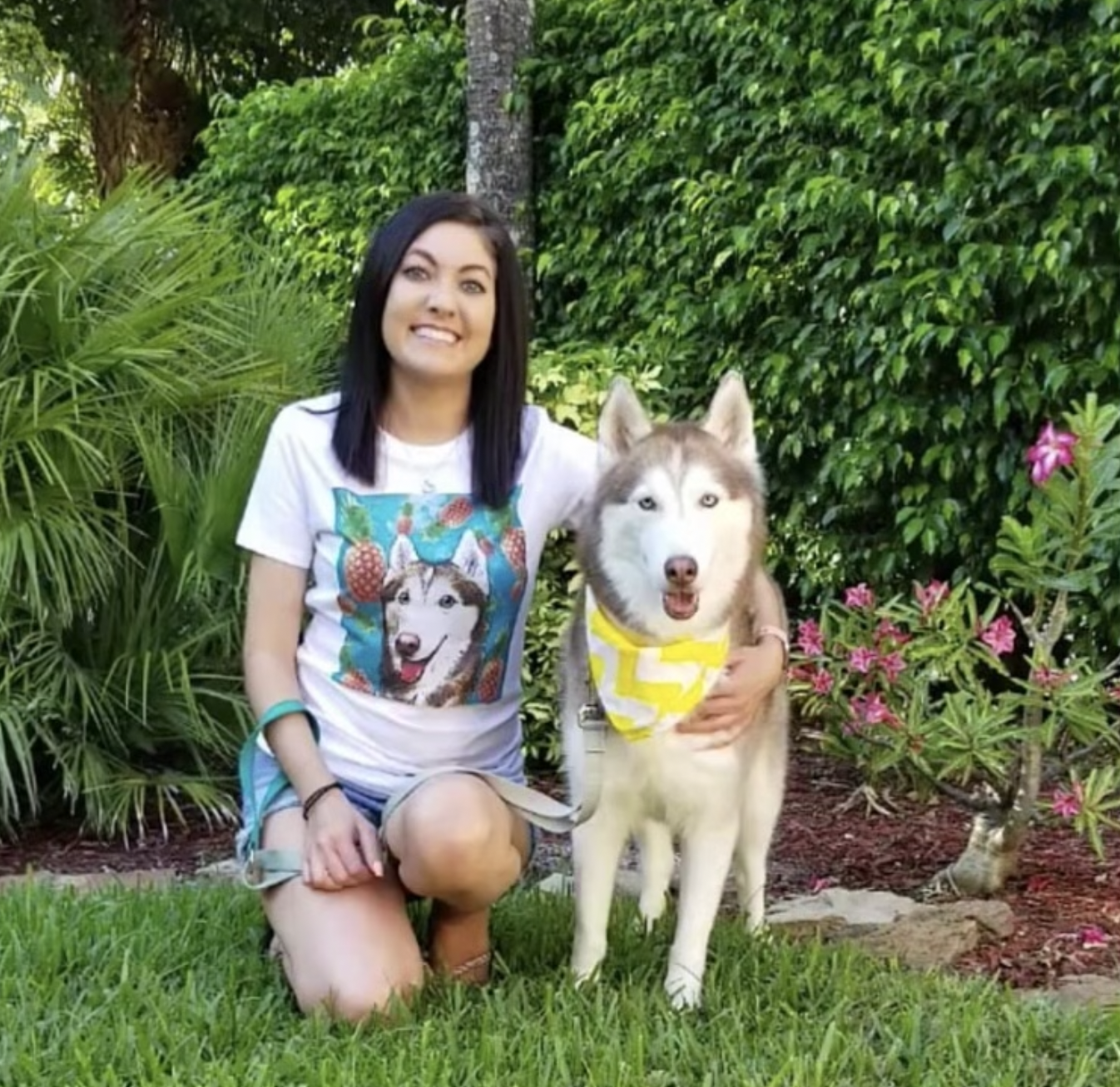We all want quick and easy fixes to life’s problems. Unfortunately, when it comes to dog dental & gum disease, it may be trickier than you might imagine (and sometimes impossible!) to reverse dental damage.
What’s The Difference Between Dental Disease And Gum Disease?
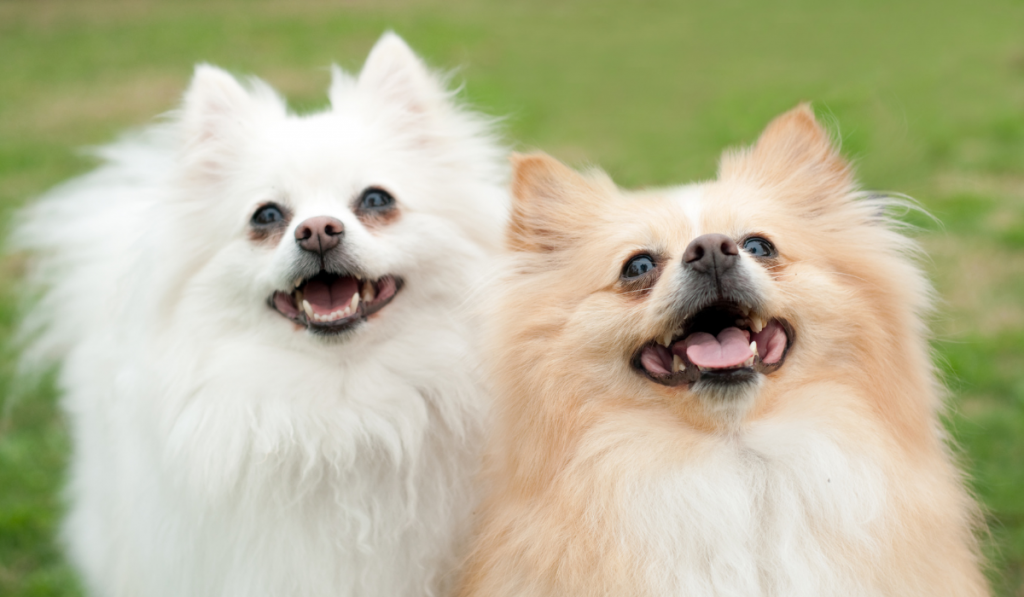

“Dental disease” in dogs is a bit of a misnomer – teeth are very rarely diseased all by themselves. Dogs get periodontal disease – meaning inflammation and infection of the gums and bone surrounding the teeth – which eventually translates to damaging the teeth themselves. “Gum disease,” or gingivitis, is inflammation of the gums – and it is one of the stages of periodontal disease. “Periodontal” actually means “the structures surrounding and supporting the teeth.”
Stages of Periodontal Disease
Stage 1: Gingivitis – Dog’s gums start showing signs of slight inflammation. They may bleed when chewing on toys. Usually by the time gums look red, swollen, and are tender to the touch, you are beyond early gingivitis. With very early gingivitis, you might have success with brushing teeth, but be aware: gingivitis is painful, and brushing inflamed gums can be more painful than helpful to your dog. Best to schedule a vet visit to see if a formal cleaning is in order (your dog will thank you later!).
Stage 2: Early Periodontitis – Your pup’s breath becomes noticeably stinky (a.k.a halitosis). You’ll see increased gum inflammation. Plaque and tartar buildup will be noticeable on teeth. Bone loss surrounding the tooth roots (under the gum line where you can’t see it) reaches up to 25%.
Stage 3: Moderate Periodontitis – Plaque and tartar start to take over teeth. Bone loss increases to 25%-50%. Stinky breath reaches fart-bomb levels. Gums bleed often and leave behind blood spots on chew toys—a reminder of the bacteria waging war in your dog’s mouth. Your dog is most likely experiencing dental discomfort.
Stage 4: Extreme, Chronic Periodontal Disease – Bone loss reaches a whopping 50% or more. Yikes! Funky breath escalates to extreme funktopian levels. Your dog is experiencing dental pain that may be intense (but dogs are famously good at hiding signs of, and living with, severe dental pain, so they may not be letting on). Gums will be red and inflamed. Infected teeth often need to be pulled. Potential organ damage from bacteria traveling through the bloodstream.
What Causes Gum Disease And Dental Disease In Dogs?
Have you ever forgotten to brush your teeth? You wake up with uber-stinky breath, and your teeth feel gritty and slimy. Ew! And that’s just after forgetting to brush once! Now, imagine the explosion of funk in your dog’s mouth if you never brush their teeth!
In your dog’s mouth, leftover food gets stuck in their teeth and begins rotting. Bacteria starts combining with food bits and taking over to form sticky plaque buildup on their teeth. Saliva then mixes with this plaque and begins to harden into tartar—which can’t be easily removed or brushed away. All the while, gums are becoming inflamed, and bacteria start sneaking under the surface toward the roots. This is the perfect environment for bacteria to cause infections. If those infections are given time to grow and spread, it can eventually cause bone loss, tissue damage, tooth root abscesses, and can even travel through the bloodstream to cause damage to other organs.
Related Article: 5 Ways Dental Disease Affects Your Dog’s Health
Are Dog Dental Disease And Gum Disease Reversible?
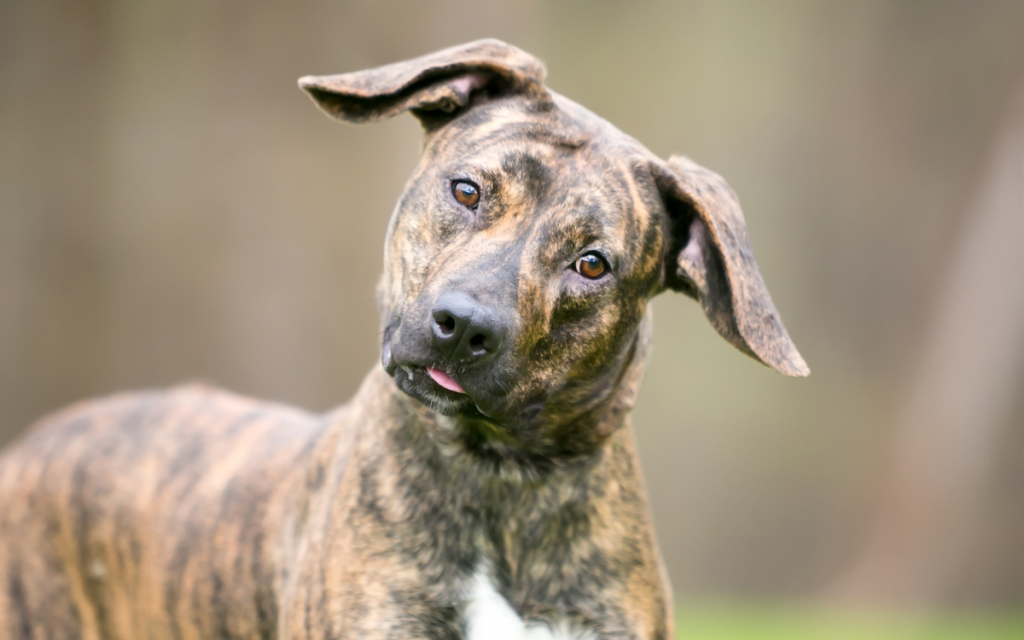

Short Answer: The damage is not reversible once bone loss and tissue damage sets in during stage 2 of disease, but it can be halted.
Unfortunately, the damage of periodontal disease can only be truly reversed during its first stage—gingivitis. At this early stage, your pup hasn’t suffered from bone loss or severe tissue damage yet. Once bacteria has made itself at home in your dog’s mouth—progressing into stage two of disease—irreversible bone loss already begins to take place.
The best way, hands down, to get rid of gingivitis before it gets worse or causes real damage, is an anesthetized dental cleaning. This will bring your dog’s oral health back to the starting line in terms of periodontal disease (think of it as going back to “Stage 0”). Brushing teeth at home might work for super early gingivitis, but by the time we notice it in our dogs, the gingivitis is already well-established enough to require more than what you can do at home – plus it hurts to brush if gingivitis is present!
An anesthetized dental cleaning is also absolutely the right course for more advanced stages of periodontal disease. While you may not be able to reverse the damage, you can remove teeth that are beyond saving and remove all that plaque and tartar that is perpetuating disease. You will end up with a clean mouth that doesn’t hurt – what a great place to start from! From there, your vet can help you with an oral care plan at home to halt or seriously slow down the progression of periodontal disease.
That doesn’t mean you should just give up if your dog is in an advanced stage, though. Quite the opposite! Even though dental disease and bone loss can’t be reversed, it still needs to be treated and stopped in its tracks! Without treatment from your veterinarian, dental disease will keep getting worse. Infection will spread—potentially leading to tooth decay, bone loss in the jaw bone, tissue damage in the mouth and face, and even damage to organs like the heart and kidneys.
Signs Of Gum Disease And Dental Disease In Dogs
Just because bacteria is hiding below the gumline, doesn’t mean that gum disease and dental disease is impossible to spot! Some symptoms of these conditions include:
- Stinky breath
- Yellowish-brown gunk on teeth
- Red, swollen gums
- Bleeding gums
- Spots of blood left behind on chew toys
- Difficulty chewing hard foods
- Excessive drooling
- Broken or missing teeth
- Chewing on only one side of the mouth
- Pawing at mouth
- Avoiding touch near the face or mouth
What Can You Do To “Reverse” Dog Dental And Gum Disease?
As we mentioned above, certain damage—like bone loss—from advanced stages of periodontal disease cannot be reversed. It can only be treated and managed with the help of your vet. Regardless of your pup’s toothy situation, always consult your vet first to determine what stage of periodontal disease your dog is up against.
1. First, Always Schedule A Dental Exam To Determine The Stage Of Dental Disease


It’s impossible for pet parents alone to determine what stage of periodontal disease their dog is fighting. That’s because a lot of the damage happens below the surface of the gums, where it’s not visible. When bacteria has free rein to party, it spreads deep under your dog’s gums—causing tissue damage, bone loss, and even damage to other organs. An oral exam, bloodwork, and x-rays are necessary to see what’s going on below the surface. That’s why it’s critical to schedule a dental exam with your vet. Depending on the level of disease, your vet will likely recommend a doggie dental cleaning under general anesthesia.
2. Schedule A Professional Doggie Dental If Recommended By Your Vet
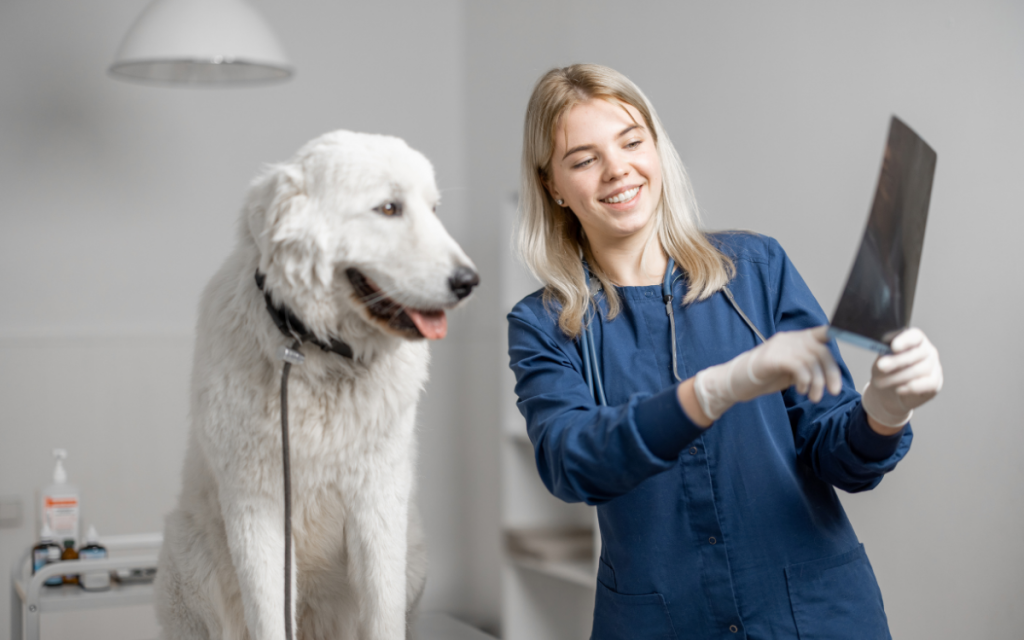

After you and your pup have completed the first task—a dental exam—there’s a good chance your vet will recommend a doggie dental cleaning. This procedure is done under general anesthesia to avoid causing your dog pain and to allow access to the whole mouth (those teeth go realllly far back!)—and for the safety of both pet and vet. While your pup is snoozing peacefully, your vet thoroughly cleans your dog’s teeth by removing tartar and calculus buildup. They’ll also be able to clean below the gum line, remove any decaying teeth, and start treating any infection. Your vet may also prescribe your dog antibiotics to treat remaining infections. They’ll provide an at-home treatment plan, and give you plenty of tips to prevent future problems.
3. Schedule Follow-Up Dental Exams
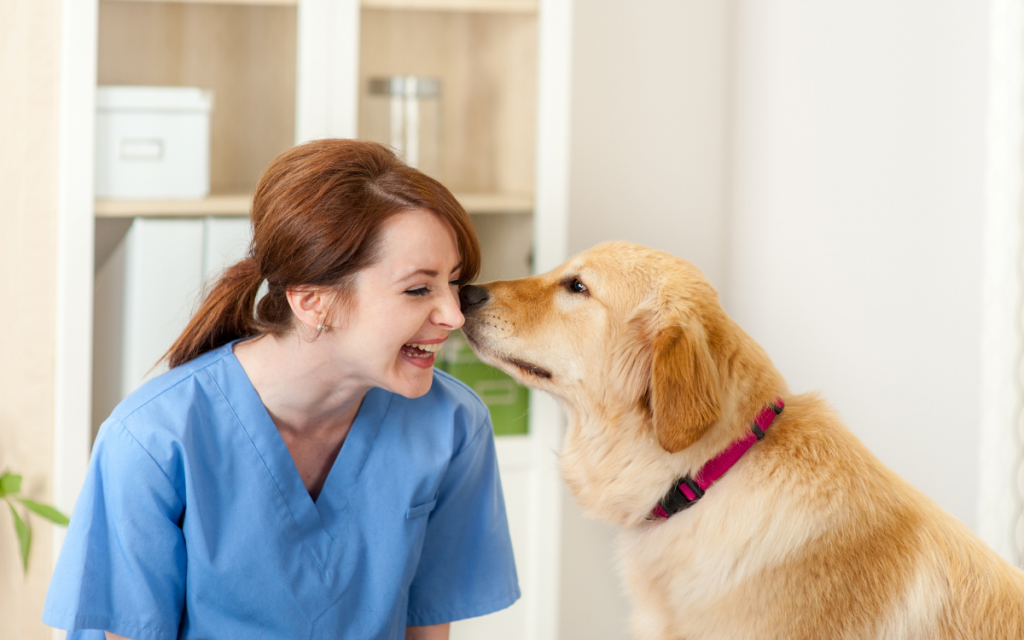

Don’t make the mistake of fixing your pup’s teeth and forgetting about them! A professional dental cleaning is not a “one-and-done” treatment. Plaque, tartar, and bacteria are always going to be looking to make a nice, cozy home inside your dog’s mouth. This means you always need to stay one step ahead when it comes to oral care. Schedule yearly or 6-month wellness exams, and make sure your vet completes a thorough dental exam during these visits. This will help you catch any further problems before they get too far out of control.
4. Brush Their Teeth Consistently
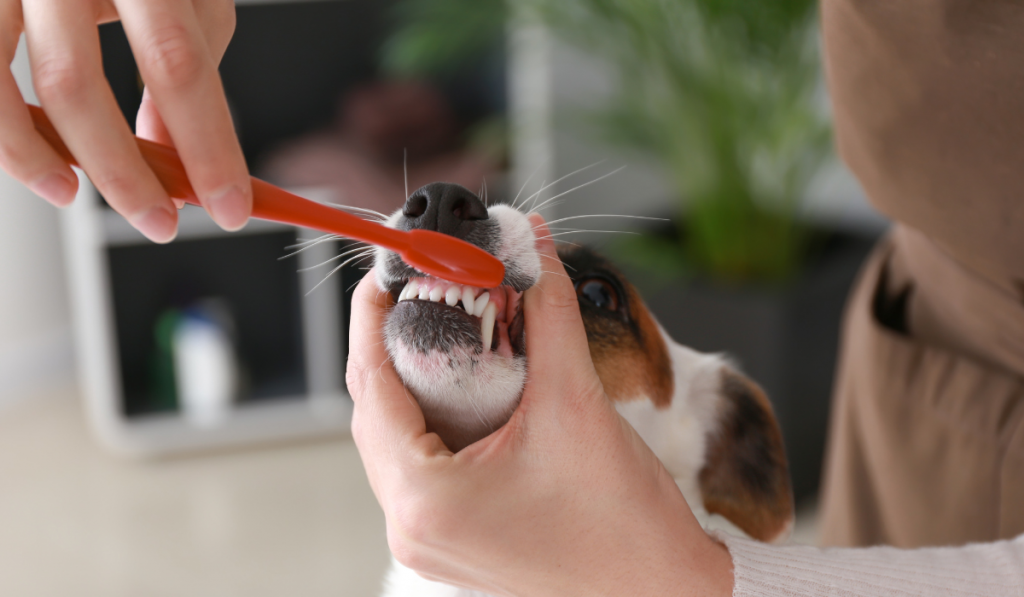

Keep in mind, toothbrushing alone can’t reverse severe dental disease without the help of a professional dental cleaning first. No amount of brushing can fix tooth decay, tissue damage, bone loss, or other issues brewing below the surface. However, toothbrushing with a dog-friendly toothpaste can help prevent gingivitis and dental disease from happening in the first place. This is the absolute best method to keep plaque, tartar, and funky breath under control.
Did your heart sink after reading that paragraph—knowing full-well your dog won’t let you brush their teeth? We understand all too well! If your dog fights a regular toothbrush tooth and nail (sorry), we suggest trying an alternative type of toothbrush—like a fingerbrush or gauze. The most important things are that you use a dog-friendly toothpaste to help breakdown gunk and bacteria, and then have some type of gentle abrasion to wipe it away.
Related Article: How To Brush Your Dog’s Teeth
5. Treat Them To Daily Dental Chews
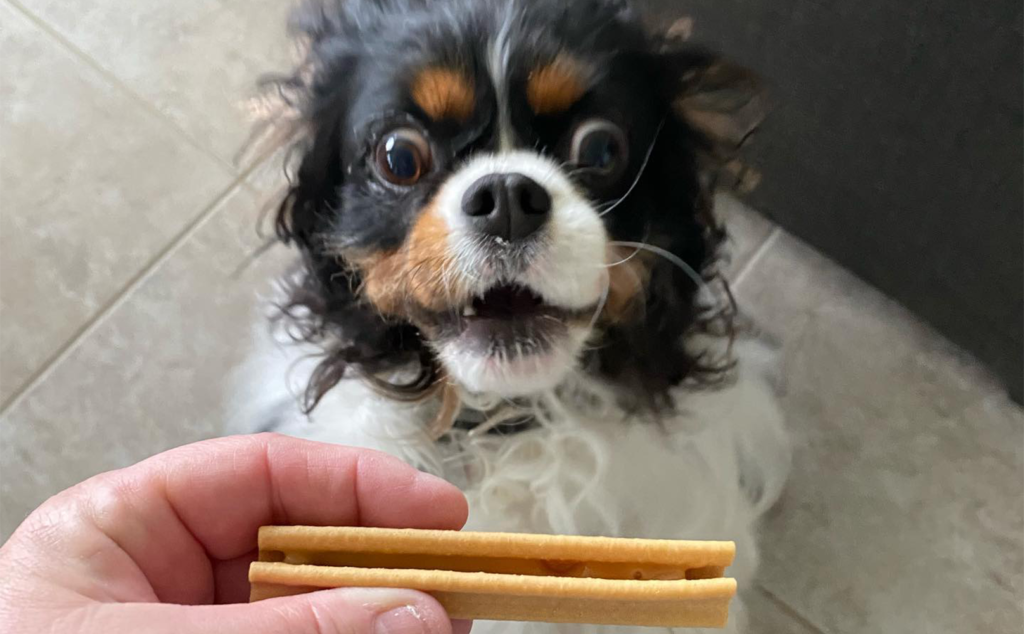

A good ol’ toothbrush and dog-friendly toothpaste is always going to clean best by scrubbing hard-to-reach nooks. With that being said, when you add doggie dental chews into your dog’s routine in combo with toothbrushing, you create a power-scrubbing duo! Giving your pup a doggie dental chew once a day has been proven to help reduce plaque and tartar buildup, even in cases when toothbrushing is impossible (although the combo is even more effective).
For even more cleaning power, try a dental chew like Bark Bright. These unique doggie dental chews combine the scrubbing action of a chew with the bacteria-fighting performance of an enzymatic dog toothpaste. Better yet—your dog just sees it as a treat! It’s like the pet-parent version of sneaking veggies into kids’ food for their own good. They’ll never know!
Related Article: Popular Dog Dental Chews: BARK Bright vs. Greenies vs. Dentastix vs. Whimzees
Pro tip: Give your dog a dental chew as a reward after brushing their teeth. It’ll help train them to put up with the toothbrushing to get the prize at the end.
Looking for a proactive approach to your dog’s dental health? BARK Bright pairs an enzymatic toothpaste with specially-shaped dental chews so your dog’s pearly whites stay in tip-top shape!


6. Talk To Your Vet About A Prescription Dental Diet
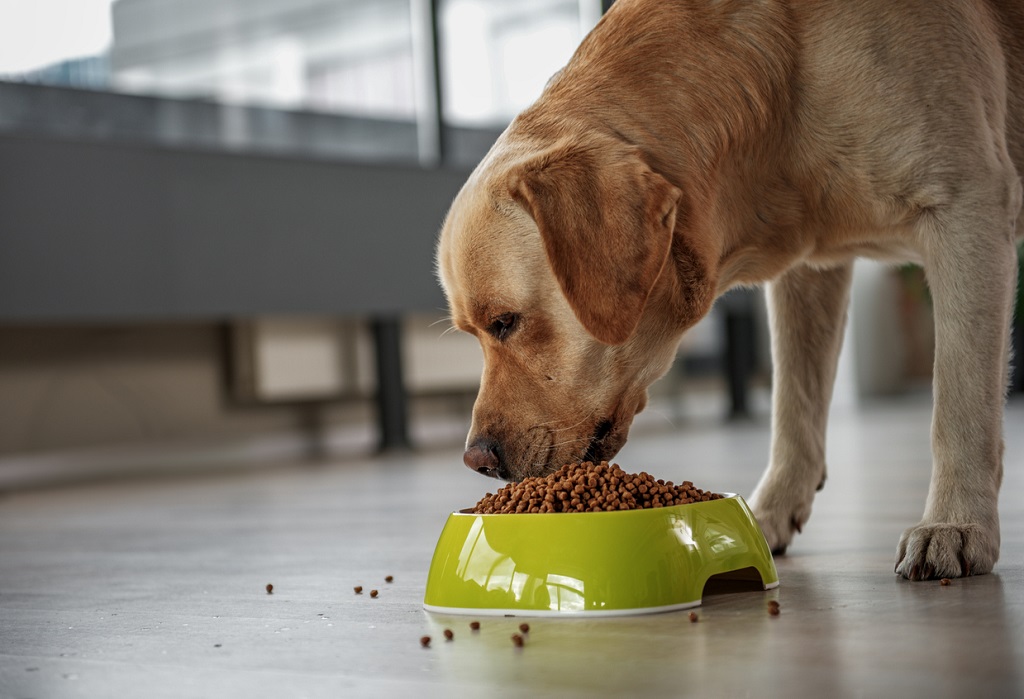

You’ll need to get your vet’s “ok” to start your dog on a dental diet—many of them require a prescription. Certain dental diets with a VOHC seal have been proven to help reduce plaque and tartar buildup. As with other suggestions in this list, a dental diet alone can’t reverse severe dental disease. All the munch and crunch of a dental diet can, however, help prevent future dental disease.
7. Consider Dental Water Additives, Wipes, Or Sprays
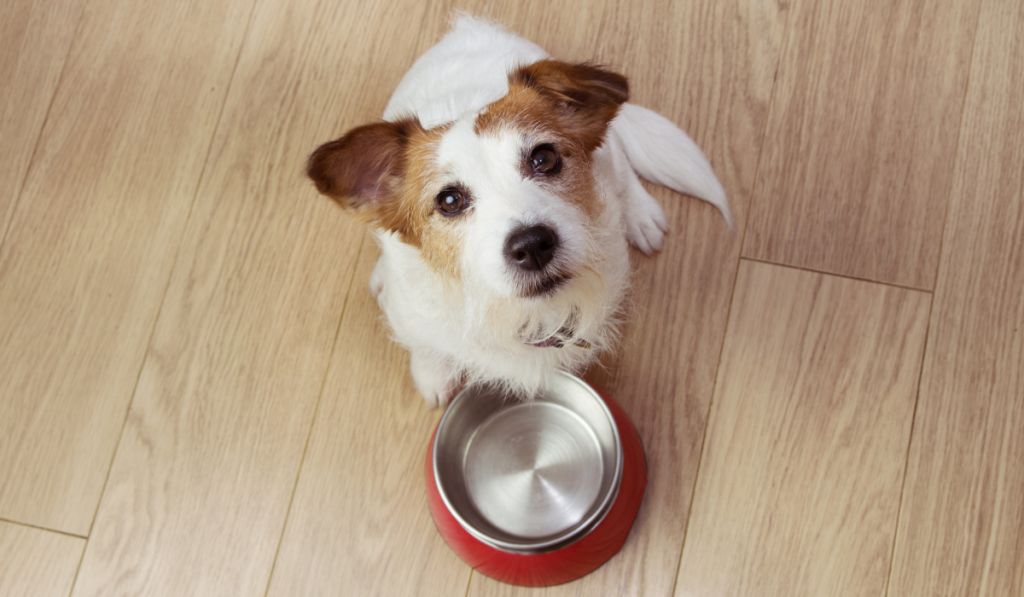

These types of products often contain enzymes or ingredients with antiseptic properties that help fight bacteria. Make sure to look for water additives, wipes, and sprays that have been VOHC-accepted to reduce plaque and tartar. This way you know you’re choosing a product that’s been tested for proven results—not just a gimmicky waste of your hard-earned money. . Always avoid water additives that use xylitol (sometimes labeled as birch sugar) in the ingredients—it’s toxic to dogs!
8. Make Sure They Have Plenty Of Chew Toys
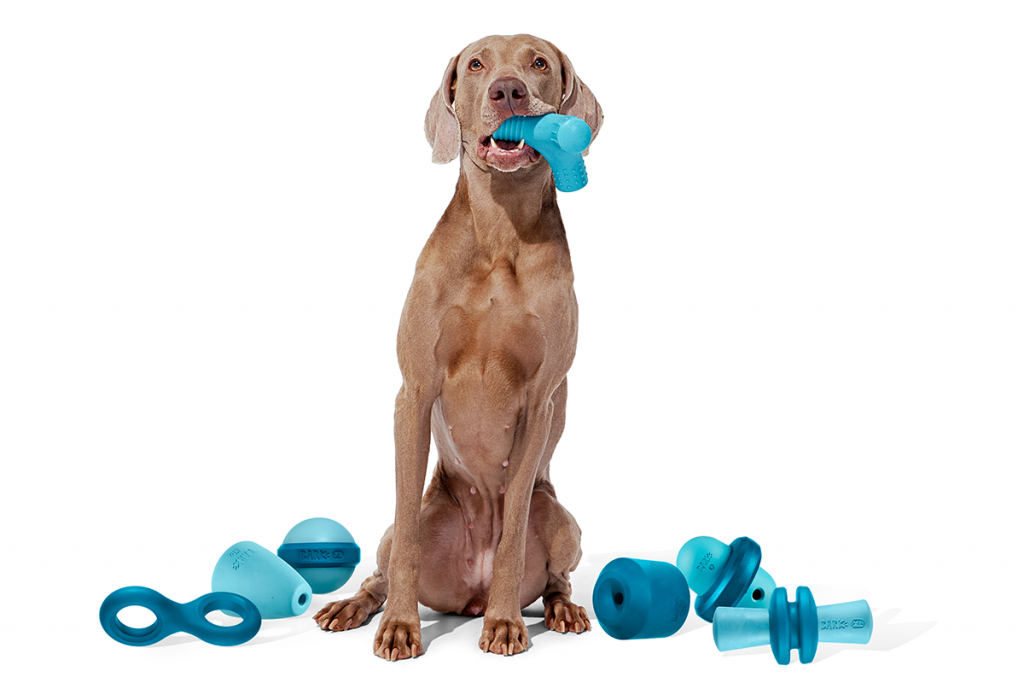

Chores—like toothbrushing—are always easier to get done when you make them fun. Chew toys help take teeth cleaning from boring to alluring. Chewing action can help scrub away leftover food particles and plaque as your dog plays with their toys. Of course, toys alone can’t replace a toothbrush and dental care, but they can be a great addition to their overall dental care routine! So, make sure your pup is loaded up with a full stock of chew toys!
What Are The Best Dog Toys For Healthy Teeth?
- Chew toys that are firm, yet soft enough that they can be dented with your fingernail. Rubber toys are a great choice!
- Avoid giving your dog anything hard—like deer antlers and hard nylon toys. Toys that are too hard can end up doing more harm than good by leading to cracked and broken teeth.
- Look for some toys with texture that can help scrub as they chew.
- Sign them up for a subscription to BarkBox Super Chewer so they get new chew toys every month!
Related Article: Help Keep Your Dog’s Teeth Clean With Super Chewer’s “Sharks” Collection
9. Dental Health Supplements
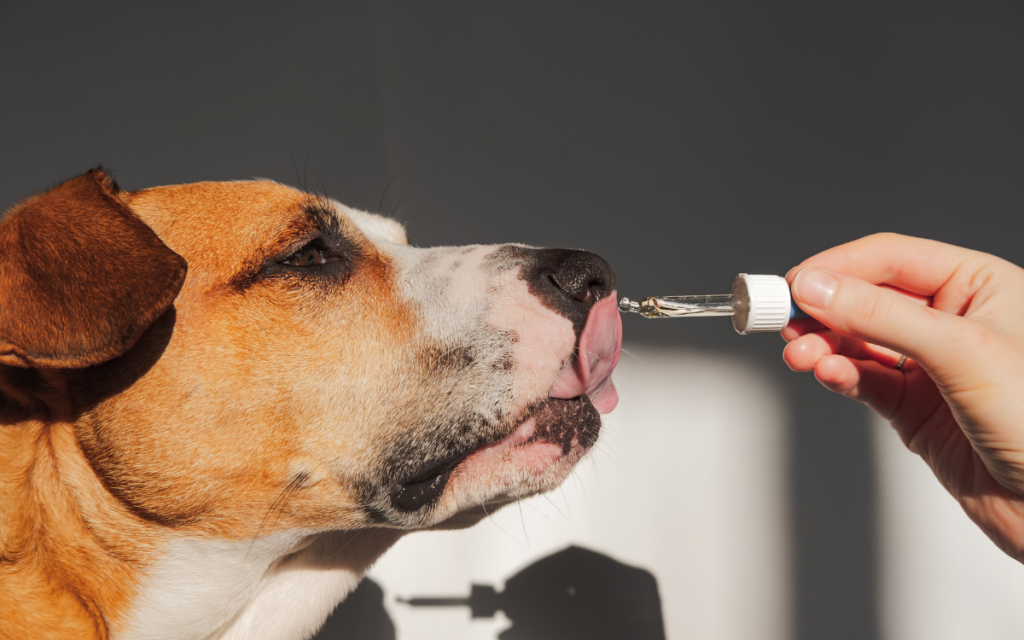

When it comes to doggie dental health supplements, you have a few choices—probiotic supplements, enzyme supplements, and supplements containing extra vitamins and minerals. Probiotic dental supplements help restore the balance of good bacteria in your dog’s mouth—promoting healthy teeth and fresher breath. Dental supplements with enzymes help break down leftover food and gunk that can get trapped in between your pup’s teeth. Lastly, supplements packed with extra vitamins and minerals—like calcium, zinc, vitamin A, and folic acid—help support oral health by reducing gum inflammation and plaque buildup. It’s always a good idea to consult your vet before adding supplements into your pup’s diet.
This article has been reviewed by Margo Hennet, DVM.
Margo Hennet, DVM, cVMA, and veterinarian at BARK is a canine nutrition, health, & wellness connoisseur. She has a combined 10 years of experience in clinical medicine, research, and education—that’s 70 dog years of know-how—and graduated from Colorado State University as a Doctor of Veterinary Medicine. She completed specialized training in internal medicine prior to working as a general practitioner in Colorado, has authored peer-reviewed publications and textbook chapters, holds certification in veterinary medical acupuncture, and is a member of the American Academy of Veterinary Nutrition and American Veterinary Medical Association.

